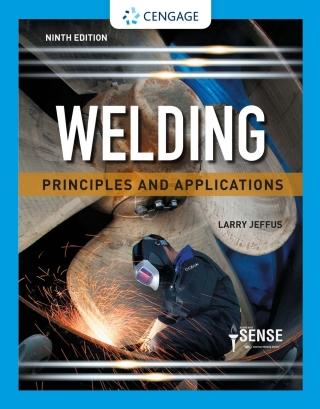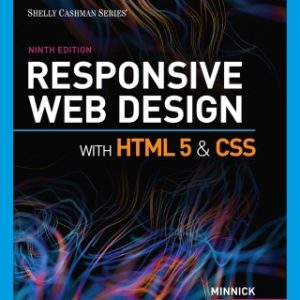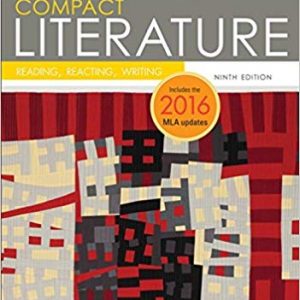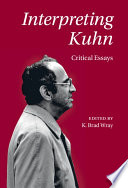Buy Welding: Principles and Applications, 9th Edition PDF ebook by author Larry Jeffus – published by Cengage Learning in 2021 and save up to 80% compared to the print version of this textbook. With PDF version of this textbook, not only save you money, you can also highlight, add text, underline add post-it notes, bookmarks to pages, instantly search for the major terms or chapter titles, etc.
You can search our site for other versions of the Welding: Principles and Applications, 9th Edition PDF ebook. You can also search for others PDF ebooks from publisher Cengage Learning, as well as from your favorite authors. We have thousands of online textbooks and course materials (mostly in PDF) that you can download immediately after purchase.
Note: e-textBooks do not come with access codes, CDs/DVDs, workbooks, and other supplemental items.
eBook Details:
Full title: Welding: Principles and Applications, 9th Edition
Edition: Ninth
Copyright year: 2021
Publisher: Cengage Learning
Author: Larry Jeffus
ISBN: 9780357377659, 9780357377802, 978-0357377659, 978-0357377802
Format: PDF
Description of Welding: Principles and Applications, 9th Edition:
This proven guide provides students with the knowledge and skills they need to complete AWS SENSE Level I and Level II programs, create Workmanship Qualification Specimens, and earn professional certification. Advancing rapidly from basic concepts and processes to today’s most complex, cutting-edge welding technologies and practices, this comprehensive text features valuable information on topics such as welding metallurgy, metal fabrication, weld testing and inspection, joint design, job costing, and environmental and conservation tips. The author opens each section by introducing students to the materials, equipment, setup procedures, and critical safety information they need to execute a specific process successfully, while subsequent chapters focus on individual welding tasks leading to SENSE certification. In addition to hundreds of new photos showcasing current welding tools and techniques, the Ninth Edition includes new and updated information on GTAW cup walking, induction welding machine operations, innovations in PAC equipment, and other industry advances relevant to today’s welding professionals. Available to complement the text and enhance learning, online MindTap resources include useful skills simulations and up-to-date welding videos.Important Notice: Media content referenced within the product description or the product text may not be available in the ebook version.
Table of Contents of Welding: Principles and Applications, 9th Edition PDF ebook:
ContentsPrefaceAcknowledgementsAbout the AuthorIndex of Experiments and PracticesSection 1: IntroductionChapter 1: Introduction to WeldingObjectivesKey TermsIntroductionWelding DefinedUses of WeldingWelding and Cutting ProcessesWelding ProcessesThermal Cutting ProcessesSelection of the Joining ProcessOccupational Opportunities in WeldingTraining for Welding OccupationsJob-Related SkillsJob-Related Personal SkillsAWS SENSE Welder CertificationLevel I Qualification ProceduresLevel II Advanced Welder QualificationSkillsUSAExperiments and PracticesWelding Video SeriesMetric UnitsSummaryReviewChapter 2: Safety in WeldingObjectivesKey TermsIntroductionBurn ClassificationPersonal Protection Equipment (PPE)VentilationSafety Data Sheets (SDSs)Handling and Storing CylindersCautionFire ProtectionEquipment MaintenanceWork Area CleaningHand ToolsElectrical SafetyPower ToolsMaterial HandlingLadder SafetySummaryReviewSection 2: Shielded Metal Arc WeldingChapter 3: Shielded Metal Arc Equipment, Setup, and OperationObjectivesKey TermsIntroductionWelding CurrentElectrical MeasurementTypes of Welding Power Supplies (Machines)Movable Coil or CoreInverterGenerator-Type and Alternator-Type WeldersRoutine MaintenanceConverting AC to DCDuty CycleWelder AccessoriesWelding CablesElectrode HoldersWork ClampsEquipment SetupArc Force ControlHot StartSummaryReviewChapter 4: Shielded Metal Arc Welding of PlateObjectivesKey TermsIntroductionPracticesEffect of Current Settings That Are Too Low or Too HighExperimentsElectrode Size and HeatArc LengthTravel Angle, Electrode Angle and Work AngleElectrode ManipulationPositioning of the Welder and the PlatePractice WeldsElectrodesStringer BeadsSquare Butt JointEdge WeldOutside Corner JointLap JointTee JointSummaryReviewChapter 5: Shielded Metal Arc Welding of PipeObjectivesKey TermsIntroductionPipe and TubingAdvantages of Welded PipePreparation and Fit-UpPractice WeldsWeld StandardsWeld PassesElectrode Care1G Horizontal Rolled PositionAWS SENSE Certification Test 1G2G Vertical Fixed Position5G Horizontal Fixed PositionAWS SENSE Certification Test 5G6G 45 Degree Celsius Inclined PositionAWS SENSE Certification Test 6GSummaryReviewChapter 6: Shielded Metal Arc Welding AWS SENSE CertificationObjectivesKey TermsIntroductionRoot PassArc ControlHot PassFiller PassCover PassPlate PreparationRestarting a Weld BeadPreheating and PostheatingAWS Workmanship Standard for Preparation of Base MetalAWS Visual Inspection CriteriaPreparing Specimens for Bend TestingAWS Specimen Preparation CriteriaAWS Acceptance Criteria for Bend TestPoor Fit-UpSummaryReviewSection 3: Cutting and GougingChapter 7: Flame CuttingObjectivesKey TermsIntroductionOxyfuel FlameFuel GasesAcetylene (C2H2)Propane and Natural GasHydrogenMetals Cut by the Oxyfuel ProcessThe Chemistry of a CutEye Protection for Flame CuttingCutting TorchesWelding and Cutting Torches: Design and ServiceCutting TipsPressure RegulatorsRegulator OperationRegulator GaugesRegulator Safety Pressure Release DeviceCompressed Gas CylindersCylinder and Regulator FittingsRegulator Safety PrecautionsRegulator Care and UseTorch Care and UseBackfiresFlashbacksReverse Flow and Flashback ValvesCare of the Reverse Flow Valve and Flashback ArrestorHoses and FittingsHose Care and UseLeak DetectionOxyfuel Cutting, Setup, and OperationTorch Tip Care and UseManifold SystemsHand CuttingLayoutSelecting the Correct Tip and Setting the PressureThe Physics of a CutMechanized Cutting EquipmentSlagPlate CuttingCutting TableTorch GuidesDistortionCutting ApplicationsPipe CuttingOxyfuel GougingSummaryReviewChapter 8: Plasma Arc CuttingObjectivesKey TermsIntroductionPlasmaCoolant SystemControl WireCompressed AirPower RequirementsHeat InputDistortionApplicationsStack CuttingDrossMachine CuttingWater TablesManual CuttingSetupSafetyStraight CutsPiercingPlasma Arc GougingCutting Round StockBeveling PipeSummaryReviewChapter 9: Related Cutting ProcessesObjectivesKey TermsIntroductionLaser Beam Cutting (LBC) and Laser Beam Drilling (LBD)Laser TypesApplicationsLaser EquipmentAir Carbon Arc Cutting (CAC-A)Manual Torch DesignPower SourcesAir SupplyApplicationSafetyU-GroovesOxygen Lance CuttingApplicationsSafetyWater Jet CuttingApplicationsArc Cutting ElectrodesApplicationsSummaryReviewSection 4: Gas Shielded WeldingChapter 10: Gas Metal Arc Welding Equipment, Setup, and OperationObjectivesKey TermsIntroductionWeld Metal Transfer MethodsGMAW Filler Metal SpecificationsWire Melting and Deposition RatesWelding Power SuppliesShielding GasPower SettingsWeave PatternTravel SpeedElectrode ExtensionGun AngleMetal Core Electrodes for GMA WeldingEquipmentGMA Spot WeldingSummaryReviewChapter 11: Gas Metal Arc WeldingObjectivesKey TermsIntroductionSetupWire-Feed SpeedGas Density and Flow RatesArc-Voltage and Amperage CharacteristicsElectrode ExtensionWelding Gun AngleEffect of Shielding Gas on WeldingPracticesMetal PreparationFlat Position, 1G and 1F PositionsVertical Up 3G and 3F PositionsVertical Down 3G and 3F PositionsHorizontal 2G and 2F PositionsOverhead 4G and 4F PositionsGlobular Metal Transfer, 1G PositionAxial SpraySummaryReviewChapter 12: Flux Cored Arc Welding Equipment, Setup, and OperationObjectivesKey TermsIntroductionPrinciples of OperationFlux CoreEquipmentAdvantagesLimitationsFCAW ElectrodesFCA Welding Electrode FluxTypes of FCAW FluxesShielding GasWelding TechniquesForehand/Perpendicular/Backhand TechniquesMode of Metal TransferTroubleshooting FCA WeldingSummaryReviewChapter 13: Flux Cored Arc WeldingObjectivesKey TermsIntroductionPracticesFlat-Position WeldsSquare-Groove WeldsV-Groove and Bevel-Groove WeldsFillet WeldsVertical WeldsHorizontal WeldsOverhead-Position WeldsThin-Gauge WeldingPlug WeldsSummaryReviewChapter 14: Gas Metal Arc and Flux Cored Arc Welding of PipeObjectivesKey TermsIntroductionJoint PreparationPractice Pipe WeldsPipe Fillet WeldsSummaryReviewChapter 15: Gas Metal Arc and Flux Cored Arc Welding AWS SENSE CertificationObjectivesKey TermsIntroductionPractice WeldsSummaryReviewChapter 16: Gas Tungsten Arc Welding Equipment, Setup, Operation, and Filler MetalsObjectivesKey TermsIntroductionTungstenTypes of Tungsten ElectrodesShaping the TungstenBreaking and RemeltingPointing and RemeltingGTA Welding EquipmentFlowmeterTypes of Welding CurrentElectronic Controls of AC Welding CurrentsShielding GasesHot StartPreflowPostflowShielding Gas Flow RateRemote ControlsGTA Welding in the FieldSummaryReviewChapter 17: Gas Tungsten Arc Welding of PlateObjectivesKey TermsIntroductionTorch AngleFiller Rod ManipulationTungsten ContaminationCurrent SettingExperimentsGas FlowPractice WeldsLow Carbon and Mild SteelsStainless SteelAluminumMetal PreparationSummaryReviewChapter 18: Gas Tungsten Arc Welding of PipeObjectivesKey TermsIntroductionPracticesJoint PreparationRootBacking GasFiller MetalCup WalkingPractice WeldsHot PassFiller PassCover PassSummaryReviewChapter 19: Gas Tungsten Arc Welding AWS SENSE Plate and Pipe CertificationObjectivesKey TermsIntroductionGTA Sheet WeldsGTA Tubing WeldsAWS SENSE GTA Sheet Practice WeldsMechanical, Destructive TestingFiller MetalSheet Metal Practice WeldsTubing and Pipe Practice WeldsStainless Steel Pipe WeldsPipe Fillet WeldsSummaryReviewSection 5: Related TechnologiesChapter 20: Shop Math and Weld CostObjectivesKey TermsIntroductionShop MathTypes of NumbersGeneral Math RulesEquations and FormulasMixed UnitsConverting NumbersAnglesTrianglesPerimeterAreaVolumeWelding CostsCost EstimationJoint DesignWeld Metal CostCost of Electrodes, Wires, Gases, and FluxBill of MaterialsInvoiceSummaryReviewChapter 21: Reading Technical DrawingsObjectivesKey TermsIntroductionMechanical DrawingsLinesDimensioningDrawing ScaleReading Mechanical DrawingsErasers and ErasingGraph PaperComputers and DrawingsSummaryReviewChapter 22: Welding Joint Design and Welding SymbolsObjectivesKey TermsIntroductionWeld Joint DesignJoint DimensionsWelding PositionCode or Standards RequirementsWelding SymbolsSummaryReviewChapter 23: Fabricating Techniques and PracticesObjectivesKey TermsIntroductionFabricationSafetyParts and PiecesLayoutKerf SpaceMaterial ShapesBill of Materials FormOverall ToleranceAssemblyAssembly ToolsFittingTack WeldsWeldingFinishingPower ToolsPedestal or Bench GrindersFlap Disc Grinding SafetyFlap Discs vs Cupped Grinding Stones and Fiber DiscsAbrasive Flap DiscsFlap Disc TypesAbrasive TypeAbrasive Grit SizesBacking MaterialHorizontal Power SawsCircular SawsSheet Metal Power Hand ToolsDrillsPortable Hand DrillsDrill PressMagnetic Base Portable Drill PressTrussesSummaryReviewChapter 24: Welding Codes and StandardsObjectivesKey TermsIntroductionCodes, Standards, Procedures, and SpecificationsWelding Procedure QualificationQualifying the Welding Procedure SpecificationQualifying and CertifyingGeneral InformationSummaryReviewChapter 25: Testing and InspectionObjectivesKey TermsIntroductionQuality Control (QC)Discontinuities and DefectsPlate-Generated ProblemsDestructive Testing (DT)Welded Butt JointsNondestructive Testing (NDT)SummaryReviewChapter 26: Welding MetallurgyObjectivesKey TermsIntroductionHeat, Temperature, and EnergyTemperatureProduction of MetalsMechanical PropertiesStructure of Solid MatterPhase DiagramsIron-Carbon Phase DiagramStrengthening MechanismsQuench, Temper, and AnnealHeat Treatments Associated with WeldingTime-Temperature-Transformation (TTT) DiagramsThermal Effects Caused by Arc WeldingGases in WeldingMetallurgical DefectsSummaryReviewChapter 27: Weldability of MetalsObjectivesKey TermsIntroductionWeldabilitySteel Classification and IdentificationCarbon and Alloy SteelsStainless SteelsChromium-Molybdenum SteelCast IronNonferrous MetalsRepair WeldingSummaryReviewChapter 28: Filler Metal SelectionObjectivesKey TermsIntroductionManufacturers’ Electrode InformationCarbon Equivalent (CE)SMAW Operating InformationFiller Metal SelectionAWS Filler Metal ClassificationsCarbon SteelWire-Type Steel Filler MetalsHydrogen EmbrittlementSummaryReviewChapter 29: Welding Automation and RoboticsObjectivesKey TermsIntroductionManual Joining ProcessSemiautomatic Joining ProcessesMachine Joining ProcessesAutomatic Joining ProcessesAutomated JoiningIndustrial RobotsSystem PlanningMetal BlanksCreating a WPSFuture of AutomationSummaryReviewChapter 30: Other Welding ProcessesObjectivesKey TermsIntroductionConstant Current Welding ProcessesHandheld SAWElectroslag Welding (ESW)Electrogas Welding (EGW)Resistance WeldingElectron Beam Welding (EBW)Ultrasonic WeldingUltrasonic Welding (USW) ApplicationsInertia Welding Process (FRW-I)Laser Beam Welding (LBW)Plasma Arc Welding (PAW)Stud Welding (SW)Thermal Spraying (THSP)Cold Welding (CW)Thermite WeldingHardfacingFriction Stir Welding (FSW)Magnetic Pulse Welding (MPW)Hybrid Laser ProcessSummaryReviewSection 6: Oxyfuel ProcessesChapter 31: Oxyacetylene WeldingObjectivesKey TermsIntroductionMild Steel WeldsFiller MetalsCast IronCharacteristics of the WeldMixing the GasesTorch Care and UseWelding and Heating Torch TipsFlat Position WeldingOut-of-Position WeldingVertical WeldsHorizontal WeldsOverhead WeldsMild Steel Pipe and TubingHorizontal Rolled Position 1GHorizontal Fixed Position 5GVertical Fixed Position 2G45 Degree Celsius Fixed Position 6GThin-Wall TubingSummaryReviewChapter 32: Brazing, Braze Welding, and SolderingObjectivesKey TermsIntroductionBrazing, Braze Welding, and SolderingAdvantages of Brazing and SolderingPhysical Properties of the Brazed or Soldered JointFluxes Used in Brazing, Braze Welding, and SolderingBrazing and Soldering MethodsFiller MetalsSoldering AlloysBrazing AlloysJoint DesignBrazing PracticesSurface Buildup and Hole Fill PracticesSilver Brazing PracticesSoldering PracticesSummaryReviewAppendixAppendix I: Student Welding ReportAppendix II: Time Sheet, Bill of Materials, and Hot Work Permit InstructionsAppendix III: AWS SENSE FormsAppendix IV: Conversion of Decimal-Inches to Millimeters and Fractional Inches to Decimal-Inches andAppendix V: Conversion Factors: U.S. Customary (Standard) Units and Metric Units (SI)Appendix VI: Abbreviations and SymbolsAppendix VII: Metric Conversion ApproximationsAppendix VIII: Pressure ConversionAppendix IX: Welding Codes and Specifications Appendix X: Welding Associations and Organizations Glossary Index
PLEASE NOTE: This sale only includes the ebook Welding: Principles and Applications 9E in PDF and will be emailed within 24 hours of payment. No other media included.





